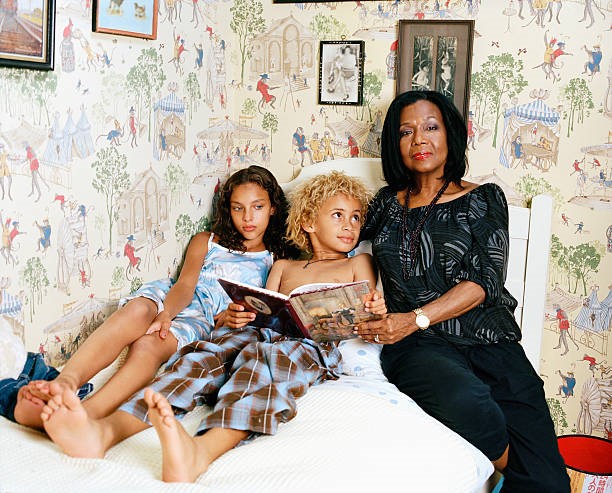Life has a way of throwing curveballs, and sometimes, those curveballs come in the form of people who leave an unforgettable mark on our lives—both for better and worse. Aunt Eileen was one such figure for Jacqueline. But who was she, and how did she shape Jacqueline’s journey? Let’s learn the story of this complicated relationship and the lasting impact it left.
Aunt Eileen was no ordinary aunt. She was a woman of contradictions—fiercely religious, highly manipulative, and, at times, overwhelmingly controlling. If there was one thing she excelled at, it was putting up a front. Eileen wasn’t just someone who preached Christianity; she practically lived in church, dragging everyone in her household along with her.
To Jacqueline, though, it wasn’t spirituality—it was a rigid, overbearing routine. Being at church seven days a week, often until late in the evening, was a kind of silent struggle for her. It’s no surprise that Jacqueline grew resentful of religion during her time under Aunt Eileen’s roof.
But Eileen wasn’t just devout; she was also resourceful in her way. She knew how to command attention, how to paint herself as the benefactor while quietly ensuring she always came out on top. To her neighbors and fellow churchgoers, she might have seemed like a saint, but for Jacqueline, living with her was a completely different story.
Jacqueline’s time with Aunt Eileen wasn’t easy. In fact, tough love feels like an understatement. Eileen was more concerned with the financial benefits of hosting Jacqueline and her siblings than their actual well-being.
Money sent by Jacqueline’s mother, meant to provide for the children, rarely made its way to them. Instead, Aunt Eileen used it to make her image better in the community— sharing goods with neighbors to appear generous while Jacqueline and her siblings were left hungry. Behind the smile of her aunt hid the reality of their suffering.
There’s a gut-wrenching moment Jacqueline often recalls: stealing another child’s lunch because the hunger was unbearable. Can you imagine? It wasn’t just about the food; it was about feeling unseen and uncared for in a place that was supposed to provide refuge.
Among the many challenging memories, one stands out as a near-death experience for Jacqueline. During a routine beach visit—a cherished ritual of Aunt Eileen’s—a strong wave swept Jacqueline out into the sea. She was just a child caught in a terrifying situation. Though she survived, the incident was something Aunt Eileen would later deny ever happened, a pattern that seemed to reflect her way of dealing with uncomfortable truths: pretend they didn’t exist.
For Jacqueline, this wasn’t just a brush with death. It was a glaring symbol of her relationship with Aunt Eileen—being left to fend for herself in situations that required guidance and care.
So, how did Aunt Eileen shape Jacqueline’s journey? She taught her resilience. While the lessons weren’t wrapped in kindness, they were invaluable. Living with Aunt Eileen forced Jacqueline to become resourceful and self-reliant at a young age. It was clear that if she wanted to grow, she couldn’t depend on others, not even family.
Through manipulation and neglect, Jacqueline learned to recognize toxic behavior and, more importantly, how to rise above it. It’s ironic, isn’t it? The very person who tried to control her ended up being one of the reasons Jacqueline developed the strength to take control of her own life.
Let’s not forget Aunt Eileen’s strong connection to religion. Her relentless church-going habits and rigid beliefs were enough to push Jacqueline away from organized religion altogether. But this rejection didn’t mean a loss of faith. The glimpses of darkness that Jacqueline had with her sparked a journey of redefining spirituality on her own terms. Sometimes, the greatest clarity comes not from following someone’s path but by stepping away from it entirely.
It’s easy to paint Aunt Eileen as a villain in Jacqueline’s story, and in many ways, she was. Her actions were often self-serving, and her treatment of Jacqueline and her siblings left scars that took years to heal. But to stop there would be to overlook the complexity of their relationship.
Aunt Eileen inadvertently taught Jacqueline about boundaries—how to identify when someone crosses them and how to enforce her own. She also demonstrated the kind of person Jacqueline didn’t want to become. For better or worse, those lessons were instrumental in shaping who Jacqueline is today.
By the time Jacqueline left Aunt Eileen’s house, she had carried a lifetime’s worth of lessons—lessons about self-worth, resilience, and survival. The trials she faced under Aunt Eileen’s roof were like a forge, tempering her spirit into steel. And while it’s true that Aunt Eileen’s influence often causes her pain, it also becomes a catalyst for growth.
Eileen was a mix of good intentions and harmful actions, a woman whose presence in Jacqueline’s life was as challenging as it was defining. Life’s most valuable lessons often come from the most difficult chapters, and Jacqueline’s time with Aunt Eileen is proof of that.
Eileen’s influence may not have been kind or nurturing, but it was undeniably transformative. She was a part of Jacqueline’s story, and in her complicated way, she helped write the woman Jacqueline would become.

Leave a Reply